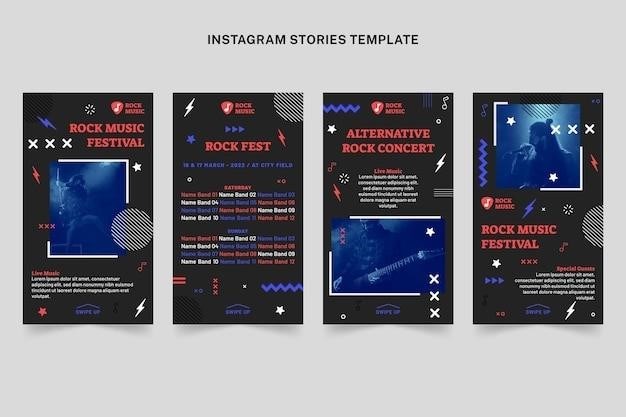WoW Classic Engineering⁚ A Comprehensive Leveling Guide
This guide provides a complete walkthrough for leveling your Engineering skill from 1 to 300 in WoW Classic. Learn efficient crafting strategies‚ optimal recipe choices‚ and essential material acquisition methods for each skill bracket. Maximize your efficiency and cost-effectiveness throughout your journey to becoming a master engineer.
In the vibrant world of World of Warcraft Classic‚ Engineering stands out as a captivating and highly rewarding profession. Unlike many other professions that primarily focus on crafting equipment‚ Engineering offers a unique blend of utility and explosive fun. Imagine crafting powerful gadgets‚ ingenious gizmos‚ and even explosive devices to aid you in your adventures. Beyond the sheer entertainment value‚ Engineering provides significant advantages in gameplay. The profession grants access to a wide array of helpful items‚ ranging from convenient tools and mounts to powerful trinkets that boost your combat capabilities. These advantages can significantly enhance your gameplay experience‚ making Engineering a valuable choice for players of all classes and playstyles. The ability to craft personal tools and mounts adds a layer of personalization and satisfaction‚ setting Engineering apart from other professions.
Trainer Locations and Initial Steps
Embarking on your Engineering journey in WoW Classic begins with locating a skilled trainer. For the Alliance‚ head to Springspindle Fizzlegear in Ironforge‚ a bustling city nestled within the dwarven mountains. Horde players will find their mentor in the bustling city of Orgrimmar‚ where Roxxik awaits to impart his knowledge. Upon meeting your trainer‚ the initial steps are straightforward⁚ learn the fundamentals of Engineering and acquire your first recipes. These early recipes typically involve crafting basic components‚ laying the groundwork for more advanced creations later on. Remember to check the Auction House for necessary materials to minimize expenses and maximize efficiency. This initial phase focuses on establishing your foundation in Engineering. It’s a crucial step in mastering this profession and unlocking its full potential‚ laying the groundwork for the more complex recipes that await you as you progress.
Leveling 1-75 (Apprentice)⁚ Efficient Recipes and Materials
The Apprentice phase of your Engineering journey (levels 1-75) in WoW Classic lays the groundwork for your future mastery. Focus on crafting recipes that yield a high skill-per-item ratio‚ optimizing your experience gain. Early recipes often involve simple components like Rough Blasting Powder and Handful of Copper Bolts‚ readily available through mining or purchasing from vendors. Prioritize these for their efficiency. As you progress‚ explore recipes requiring Bronze Bars; these offer a good balance between skill gain and material cost. Remember‚ the Auction House is your friend! Purchasing materials in bulk can often save you time and gold compared to gathering them yourself. Strategically combine crafting with gathering professions like Mining to further reduce expenses. Efficient material management and smart recipe selection are paramount during these initial levels. Mastering this phase establishes a solid foundation for the challenges ahead.
Leveling 75-150 (Journeyman)⁚ Optimizing Crafting Choices
Reaching Journeyman-level Engineering (75-150) in WoW Classic demands a more strategic approach to crafting. While simple recipes remain viable‚ prioritize those offering the best skill-per-gold ratio. This stage often involves transitioning to recipes using more advanced materials like Steel Bars and various components. Careful consideration of Auction House prices becomes increasingly important. Bulk purchasing of essential materials remains a cost-effective strategy. However‚ remember to factor in potential price fluctuations and adjust your material acquisition accordingly. Don’t be afraid to experiment with different recipes to find the optimal balance between skill gain and resource expenditure. Consider the long-term implications of your choices‚ as the cost of materials increases significantly as you progress. Efficient material management and a keen eye on the Auction House are crucial for successful advancement through this level range. Careful planning and adaptability will ensure your smooth transition to the Expert rank.
Leveling 150-225 (Expert)⁚ Advanced Recipes and Material Acquisition
The Expert Engineering skill range (150-225) in WoW Classic introduces more complex recipes and a greater reliance on specific‚ often rare‚ materials. This phase requires a shift from simple crafting to a more strategic approach focusing on maximizing skill gains per unit of gold spent. Thorough research into the most efficient recipes is crucial. Consider consulting online resources and comparing recipes based on skill point yield and material costs; Auction House monitoring becomes even more vital. Track price fluctuations for key materials and adjust your purchasing strategy accordingly. Farming certain materials might prove more cost-effective than buying them from the Auction House‚ depending on your server’s economy and your available time. The potential rewards‚ in terms of powerful gadgets and items‚ justify the increased investment in time and resources. This stage necessitates a well-defined plan‚ incorporating both efficient crafting and shrewd material acquisition to smoothly progress toward the Artisan rank.
Leveling 225-300 (Artisan)⁚ Maximizing Efficiency and Cost-Effectiveness
Reaching the Artisan level in WoW Classic Engineering (225-300) demands a refined approach to maximize efficiency and minimize costs. At this stage‚ the recipes are significantly more expensive‚ requiring careful planning and resource management. Prioritize recipes offering the highest skill-per-gold ratio. This necessitates detailed research and potentially using multiple online resources to compare recipe costs and skill gains across different servers. The Auction House becomes your primary tool; constantly monitor prices for essential materials to identify optimal purchasing times. Consider farming specific materials if their Auction House prices are inflated. Factor in the time investment versus the potential gold savings. Efficient material management is paramount; avoid crafting items unless you possess all the required components to prevent interruptions in your leveling progress. This final stage might require patience and a willingness to adapt your strategy based on prevailing market conditions. The achievement of Artisan Engineering is a testament to skillful resource management and diligent planning.
Essential Materials List⁚ A Complete Shopping Guide
This comprehensive shopping guide details the crucial materials required for efficiently leveling your Engineering skill in WoW Classic from 1 to 300. Accurate quantities may vary slightly depending on your chosen recipes and server-specific Auction House prices. However‚ this list provides a solid foundation for your purchasing strategy. You’ll need substantial quantities of copper‚ tin‚ and thorium bars‚ readily obtained through mining or the Auction House. Linen cloth and various stones (rough‚ coarse) are also essential for early-stage recipes. For mid-level crafting‚ stock up on iron bars and additional quantities of thorium. As you approach the higher skill brackets‚ acquiring the necessary components might involve a mix of purchasing from the Auction House and farming specific resources. Remember‚ the success of your engineering journey hinges upon securing these materials at competitive prices and maintaining a steady supply throughout the leveling process. Regularly check Auction House listings for price fluctuations and potential bargains. Careful planning and timely procurement are key to minimizing expenses and maximizing efficiency.
Mastering the Art of Engineering in WoW Classic
Congratulations on reaching the pinnacle of engineering expertise in World of Warcraft Classic! This comprehensive guide has equipped you with the knowledge and strategies to efficiently level your engineering skill from apprentice to artisan. Remember that consistent planning and material acquisition are vital. By carefully selecting recipes‚ optimizing crafting choices‚ and monitoring Auction House prices‚ you’ve significantly reduced costs and maximized your progress. Now‚ armed with your newly acquired mastery‚ delve into the creation of powerful gadgets‚ useful tools‚ and thrilling explosives. Explore the many benefits of engineering‚ such as crafting unique mounts and toys‚ enhancing your gameplay experience. Don’t hesitate to experiment with different recipes and explore alternative crafting paths based on your play style and resource availability. The journey to becoming a master engineer is ongoing‚ so continue to refine your strategies‚ adapt to changing market conditions‚ and enjoy the fruits of your labor. Your dedication and skill will undoubtedly make you an invaluable asset to your guild and a formidable force in the world of Azeroth.


